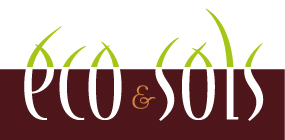Cher cheur
cheur
CIRAD Montpellier
Cirad, UMR Eco&Sols
Campus La gaillarde Institut AGro - INRAe - Bat 13
2 place Viala - 34060 Montpellier
Téléphone : +33 (0)4.99.61.23.32
Email: Cette adresse e-mail est protégée contre les robots spammeurs. Vous devez activer le JavaScript pour la visualiser.
Web site : http://agents.cirad.fr/index.php/Philippe+THALER and https://www.researchgate.net/profile/Philippe_Thaler
Experience
Senior researcher, I am involved in the « Soil/plant Interactions and biogeochemical coupling » and « C Balance, Soil fertility and global changes » groups of Eco&Sols. I have been working in CIRAD since 1990. My work links the physiology to the agronomy of tropical tree crops, mainly the rubber tree. This work is done with partners from the producing countries. After 3 years in Gabon, 4 years in Ivory Coast and several in France, I contributed to the building-up of the Hevea Research Platform in Partnership (HRPP) in Thailand from 2001 to 2007. I coordinated the platform from 2013 to 2018. In 2018-2019, I was Invited Professor at the Kunming Institute of Botany, Chinese Academy of Science. Back to France, I was Deputy-Director of Eco&Sol from mid-2019 to mid-2021.
Qualification and expertise
I have a double qualification in rubber agronomy, from planting practices to tapping systems, and in ecophysiology, on a tree to cover scale. My specific interest and expertise is the influence of tapping the rubber trunk for latex production on the functioning of the whole tree, particularly on carbon and water budget. Latex is a peculiar plant product and this makes the rubber tree a very interesting model to study resource allocation.
I am now extending the scope of my research to environmental and social impacts of tree plantations. Within the HEVEADAPT (ANR 2014-2017) project that I coordinated, we assessed how family plantations can adapt to global changes and keep sustainable. We now focus on forecasting the impacts of climate change and workforce availability on natural Rubber commodity chain in Southeast Asia (FORSEA AFD Project 2022-2026).
Last 10 Publications
Zhai D, Thaler P, Worthy FR, Xu J. 2023. Rubber latex yield is affected by interactions between antecedent temperature, rubber phenology and powdery mildew disease. International Journal of Biometeorology, https://doi.org/10.1007/s00484-023-02515-2.
Wang X, Blanken PD, Wood JD, Nouvellon Y, Thaler P, Gay F, Kasemsap P, Chidthaisong A, Petchprayoon P, Chayawat C, Xiao J. 2023. Solar-induced chlorophyll fluorescence detects photosynthesis variations and drought effects in tropical rubber plantation and natural deciduous forests. Agricultural and Forest Meteorology, 339, 109591, https://doi.org/10.1016/j.agrformet.2023.109591.
Clinquart P, Mounkoro B, Guérin H, Ickowicz A, Thaler P, Peltier R, Sibelet N. 2022. Defining functional groups of tree species according to rural stakeholder perceptions in Central Mali. Agroforestry Systems, 12 p. https://doi.org/10.1007/s10457-022-00750-x.
Wang X, Blanken PD, Kasemsap P, Petchprayoon P, Thaler P, Nouvellon Y, Gay F, Chidthaisong A, Sanwangsri M, Chayawat C, Chantuma P, Sathornkich J, Kaewthongrach R, Satakhun D, Phattaralerphong J. 2022. Carbon and Water Cycling in Two Rubber Plantations and a Natural Forest in Mainland Southeast Asia. Journal of Geophysical Research - Biogeosciences, 125 (5). DOI: https://doi.org/10.1029/2022JG006840
Panklang P, Thoumazeau A, Chiarawipa R, Sdoodee S, Sebag D, Gay F, Thaler P, Brauman A. 2021. Rubber, rubber and rubber: how 75 years of successive rubber plantations rotations affect topsoil quality. Land Degradation and Development, 33 (8), 1159-1169. DOI: https://doi.org/10.1002/ldr.4171
Cambou A, Thaler P, Clément-Vidal A, Barthès BG, Charbonnier F, Van den Meersche K, Aguilar Vega ME, Avelino J, Davrieux F, Labouisse JP, de Melo Virginio Filho E, Deleporte P, Brunet D, Lehner P, Roupsard O. 2021. Concurrent starch accumulation in stump and high fruit production in coffee (Coffea arabica). Tree Physiology, 41, 2308–2325. DOI: https://doi.org/10.1093/treephys/tpab075
Zhai D, Thaler P, Luo Y, Xu J. 2021. The powdery mildew disease of rubber (Oidium heveae) is jointly controlled by the winter temperature and host phenology. International Journal of Biometeorology. https://doi.org/10.1007/s00484-021-02125-w.
Zhai D, Wang J, Thaler P, Luo Y, Xu J. 2020. Contrasted effects of temperature during defoliation vs. refoliation periods on the infection of rubber powdery mildew (Oidium heveae) in Xishuangbanna, China. International Journal of Biometeorology, 64, 1835–1845. DOI: https://doi.org/10.1007/s00484-020-01969-y.
Duangngam O., Desalme D., Thaler P., Kasemsap P., Sathornkich J., Satakhun D., Chayawat C., Angeli N., Chantuma P., Epron D. 2020. In situ 13CO2 pulse labelling of rubber trees (Hevea brasiliensis) reveals a shift in the contribution of the carbon sources involved in latex regeneration. Journal of Experimental Botany, 71, 2028-2039.
Andriyana Y, Thaler P, Chiarawipa R, Sopharat J. 2020. On-farm effect of bamboo intercropping on soil water content and root distribution in rubber tree plantation. Forests, Trees and Livelihoods. DOI 10.1080/14728028.2020.1798818.






